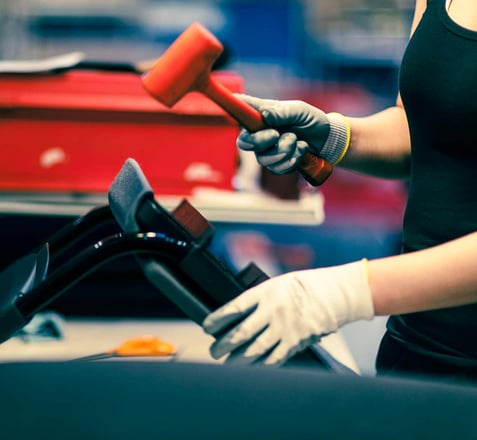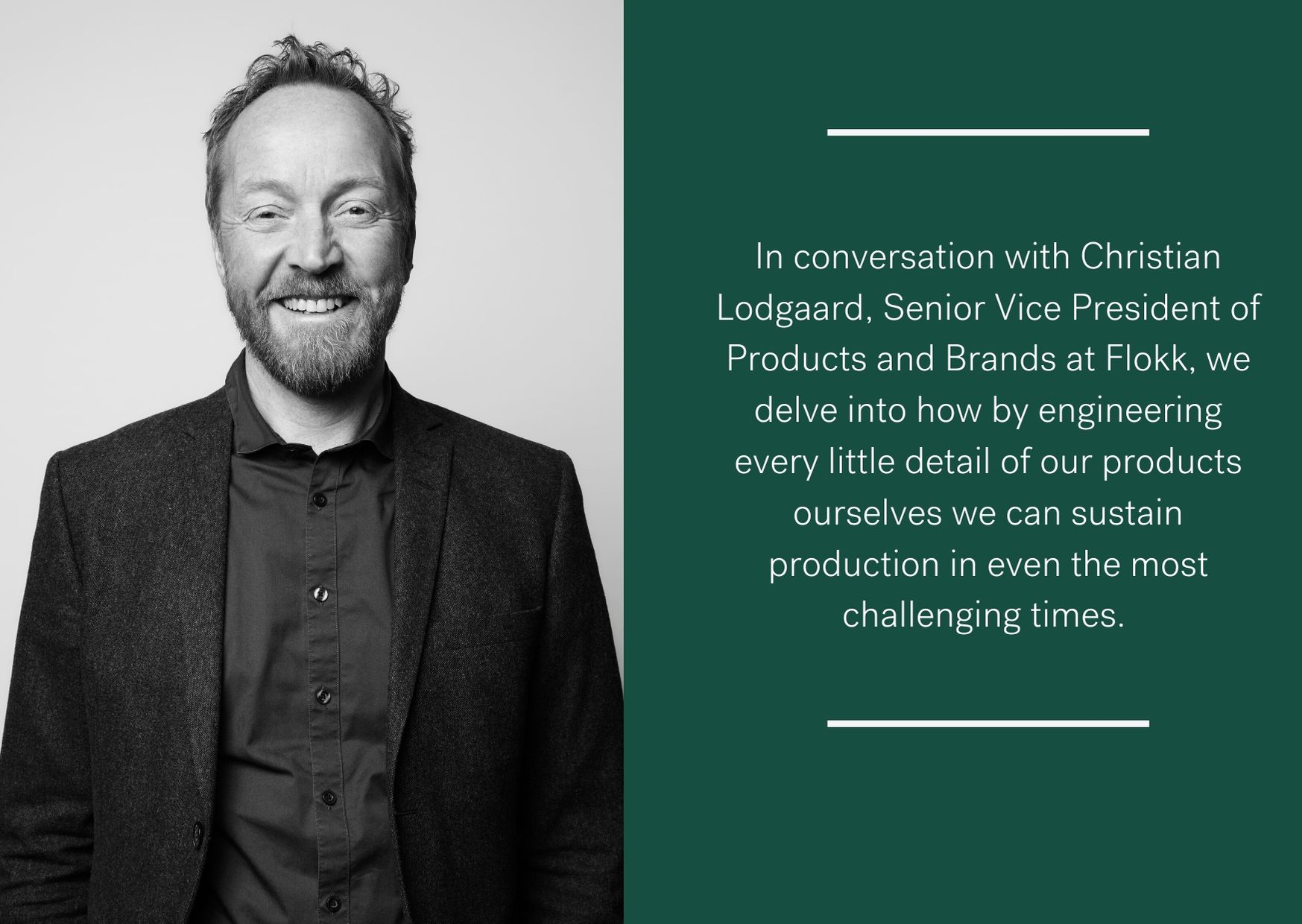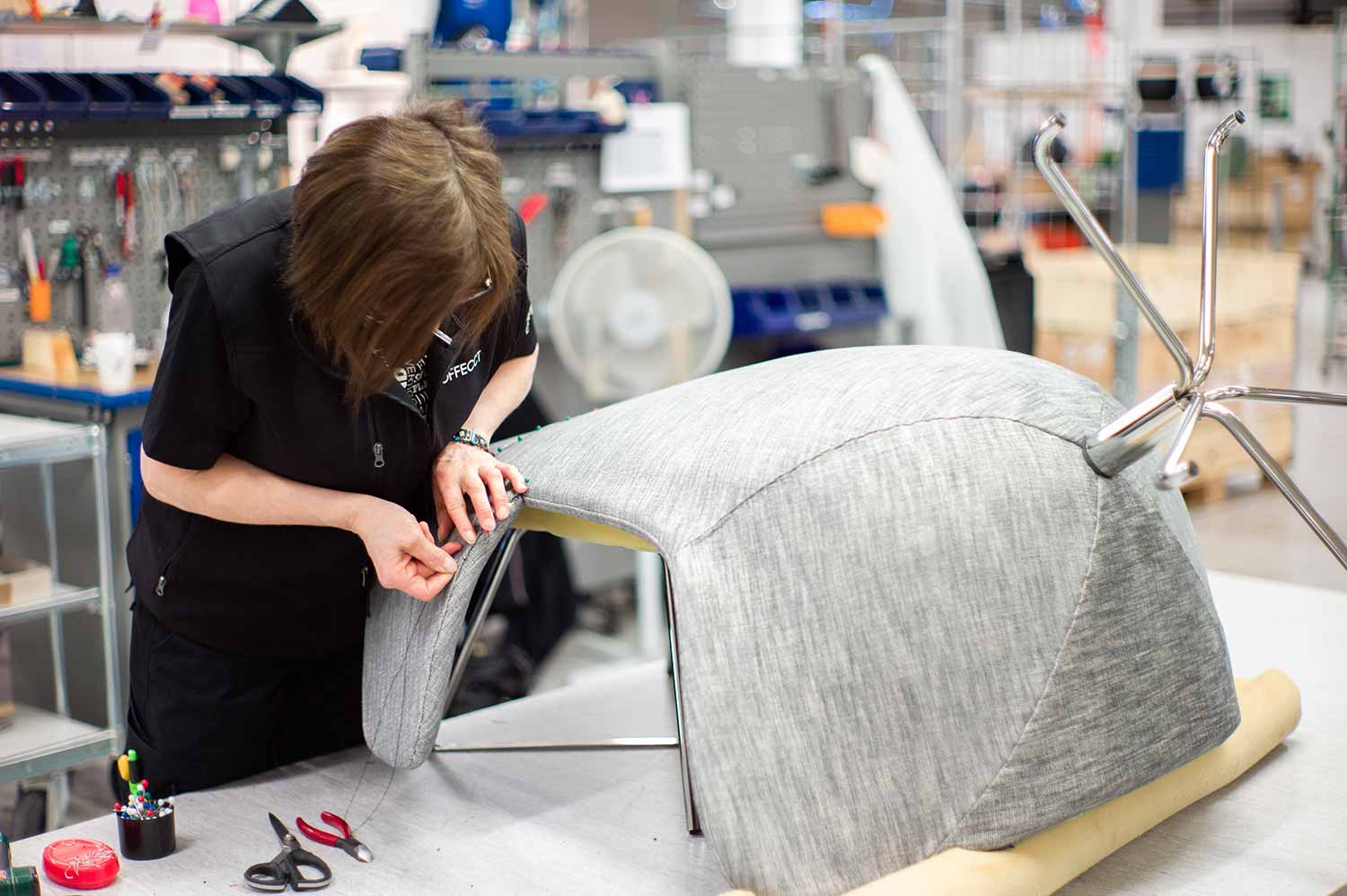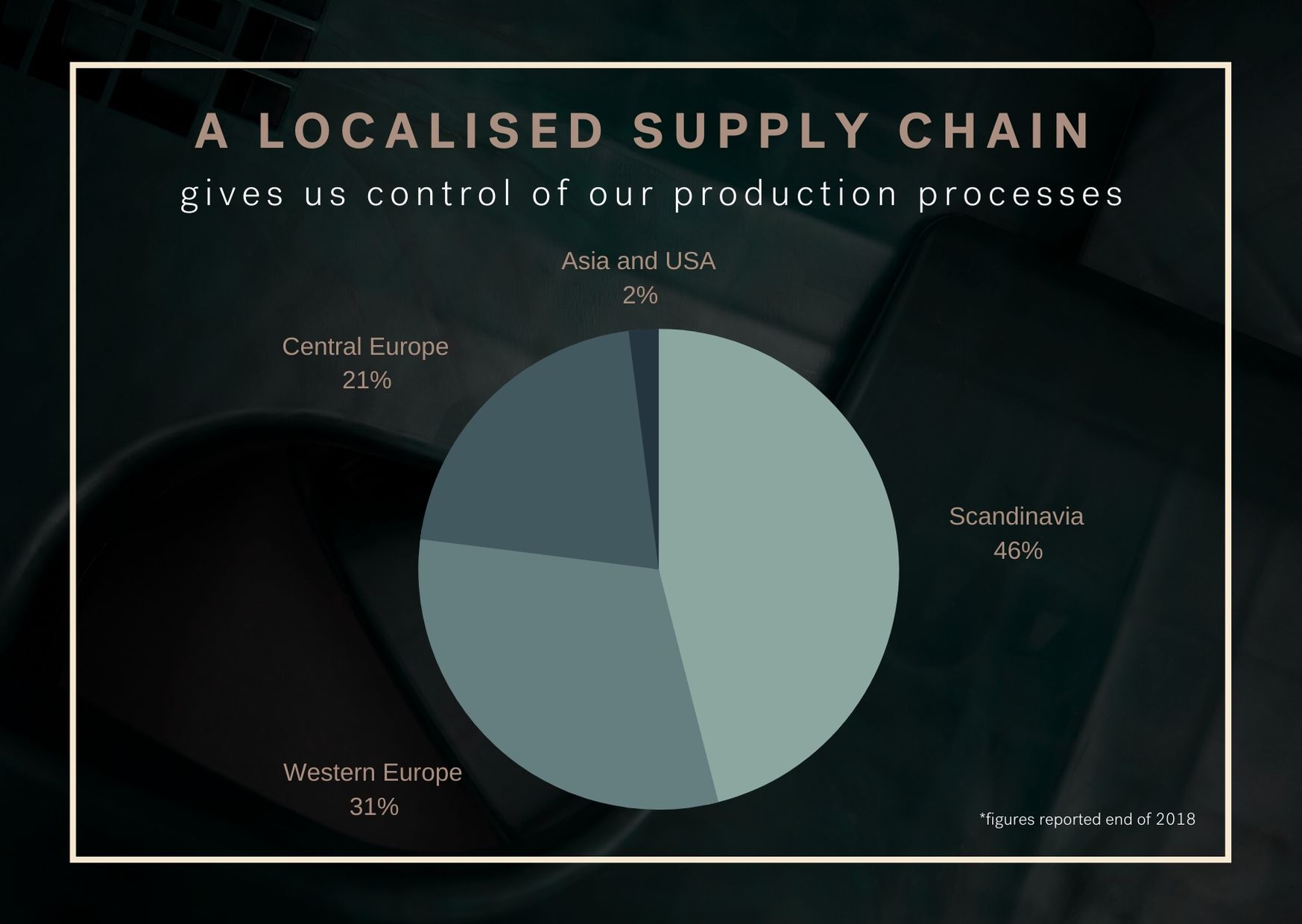Creating quality workplace furniture that is both sustainable and ergonomically correct, is an exercise of bringing together the best of design, engineering, industrialisation and raw material knowledge.
Christian: “We have always had the ambition to diverge from the beaten track, to approach designing workspace furniture from a unique angle. We see little use in producing yet another product just like the ones that are already out there.
We want to help our customers have the freedom to choose products that we believe are different and better. We always have and always will put human factors and sustainability first. And then, once we get those two right, we push the aesthetics as far as possible.
At the same time, we industrialise our products by investing in our own tooling. This tooling is then placed in our own factories or sometimes within the production processes of our close-knit range of suppliers. "
Our main factories being in Europe, it is important for us to have suppliers that are geographically close so that they can deliver just-in-time. Since 2011 we have systematically worked on concentrating our supply chain on fewer suppliers. In 2018 our spend on suppliers based on location was 46% in Scandinavia, 31% Western Europe, 21% Eastern Europe and just 2% from Asia and the USA.
In the sourcing process, we look at the total cost of ownership and don't just solely focus on the initial price of parts. It's important to build long-lasting relationships when narrowing the circles and reducing the carbon footprint. Reducing the need for widespread suppliers means we have a lot more control than we would have if we were to source ready-made modules.
Looking for home office furniture? Check out our fast delivery selection today (Click here for US Market)
Christian: “Even though it might have helped us to bring new products to market more often, we have refused to chase lower production costs by going to the Far East with our production. We have made it a priority to stay in and support local communities like Røros, Nässjö, Turek.”
"Instead of leaving these sites or outsourcing production, we have countered this by heightening our own industrialisation rates. This has also kept the vast majority of our suppliers nearby meaning lower logistic issues, higher efficiency, and an extremely sustainable approach to production.
By ensuring a robust value chain we can ensure production can go ahead even in these challenging times.”
A great example of Flokk going above and beyond in trying not to source materials from afar is when Flokk, Gudbrandsdalens Uldvarefabrik and Sandnes Garn collaborated on a collection of Norwegian wool upholstery fabrics. For many years Nordic furniture manufacturers had been using merino wool from New Zealand in their products.
We embarked on this project in 2015 to bring wool manufacturing back to Norway, returning to our local resources and bringing the advantages and potential of Norwegian wool back to life. It was about origin, about appreciating the value of an important local resource and making sure it is being used to its full potential.
Inspire great work
Throughout our whole design process, we stick to our mantra ‘Inspire Great Work’ and strive to be a consistently reliable partner for all of our customers.
Visit website





